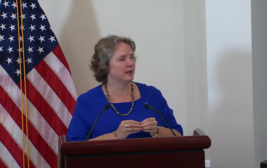Pam McFarland
Pam is ENR’s senior editor for government coverage, focusing on federal environmental and labor issues as they relate to the construction industry. She has a degree in journalism and an M.A. in writing fiction, and has worked previously as both an editor at ENR (2007-2016) and as a freelancer for a variety of publications and clients. One of her favorite gigs involved writing about stars, black holes and the mysteries of the universe for NASA.
ARTICLES
Environment
EPA to Award $4.6B for Climate Pollution Reduction Projects
Funds will go to jurisdictions with plans that would have most impact
Read More
ENR NY/NJ Infrastructure Forum
Federal Funding Buoys Infrastructure Work in New York, New Jersey
Read MoreEnvironmental Protection
Weaker WOTUS Rule From EPA Opens Protected Wetlands to Development
Lawsuits claim the new WOTUS regulation is vague and threatens to slow infrastructure approvals
Read More
The latest news and information
#1 Source for Construction News, Data, Rankings, Analysis, and Commentary
JOIN ENR UNLIMITEDCopyright ©2024. All Rights Reserved BNP Media.
Design, CMS, Hosting & Web Development :: ePublishing

















